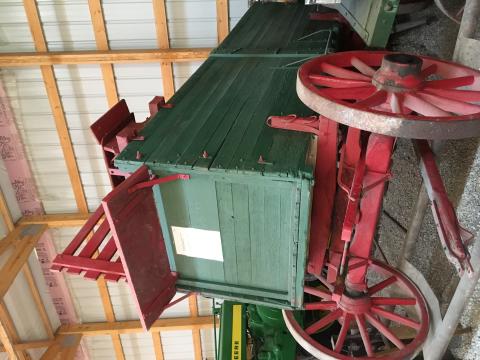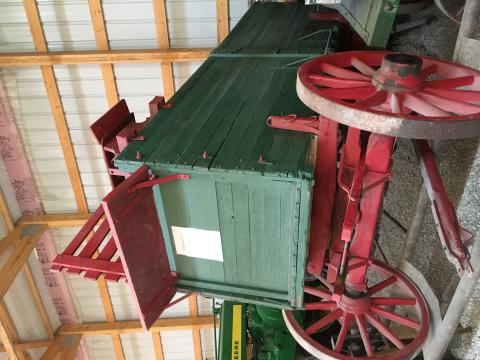When corn was harvested by hand, a triple box was the wagon used. A triple box has three twelve inch boards with an extra board on one side to stop and drop the thrown ear. The wagon was drawn by a team of horses that were broken for voice commands. The farmer could stop and start the team without having to get into the wagon. A good picker could pick 80 bushel in a day. It was exceptional for someone to pick 100 bushel. With todays hybrids and combines, it takes about three minutes to pick 100 bushel. The corn would then have to be scooped off into a corn crib. A husking hook and/or finger protector allowed the person picking to more easily grasp the ear. Those who were skilled had one ear hitting the bang board and one in the air as they were taking another ear off the stalk. If the wife helped with the picking, smaller children would sit in the wagon box as the parents picked. Country school often let out so older children could help or children might pick a row before they went to school and again after returning from school. No after school sports for country kids. The goal was to get the corn picked before Thanksgiving. Most early farms had 80 acres divided into 4 fields. Two of these might be corn. There were no soybeans. The better ears were kept back and used for seed the following spring. There was a small box on the side of the wagon for these ears. An unheated room upstairs or in the attic worked well for further drying the chosen ears. There were several styles of racks. In the spring, a couple of kernels were taken off each ear and put into a moist medium to check for germination. Those with the best germination were then shelled. Seed genetics has shown that this process does not give you the best future yield. Content can be used with the following standards: 4th grade SS 4.26 Changes to Agriculture in a lesson on farming methods used in the early 1900s. For any use other than instructional resources, please check with the organization that owns this item regarding copyright restrictions.
2018.054.028 [Wagon]
Legal Status
Ownership of this resource is held by the Heartland Museum Foundation and has been provided here for educational purposes only, specifically for use in the Iowa Museum Association's "Teaching Iowa History" project. It may not be downloaded, reproduced or distributed in any format without written permission from the Rights Holder. For information on U.S. and International copyright laws, consult an attorney.


